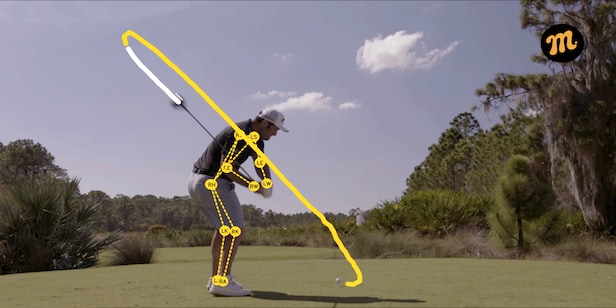Cobra DS-Adapt fairway woods, hybrids: What you need to know – Australian Golf Digest

- by Admin
- December 12, 2024

WHAT YOU NEED TO KNOW: The Cobra DS-Adapt lineup rolls out three new fairway woods and a hybrid and each will make use of a new 33-way adjustable hosel to help players dial in the ideal launch and ball flight characteristics their games need. The range includes the compact, low-spin DS-Adapt LS, which features a a combination titanium and carbon composite body and titanium face for extra ball speed. There’s also the DS-Adapt X and Max fairway woods, which combine low-spin and forgiveness and in the case of the oversized Max, slice-correction, as well. Finally, there are the DS-Adapt hybrids, a higher-launching option with internal weighting that pushes the CG low and forward for reduced spin.
PRICE: DS-Adapt LS fairway wood ($430; 14.5, 16, 17.5 degrees; 33-way adjustable hosel). DS-Adapt X fairway woods (15, 16.5, 18, 21 degrees; 33-way adjustable hosel). DS-Adapt Max fairway woods ($330; 15.5, 18.5, 21.5, 24.5 degrees; 33-way adjustable hosel). DS-Adapt hybrids ($300; 17, 19, 21, 24, 28 degrees, 33-way adjustable hosel). Available for pre-sale Dec. 12, in stores Jan. 10.

DS-Adapt LS
3 COOL THINGS 1. Twist again. The DS-Adapt line, as the name implies, makes a heavy investment in optimizing each player’s launch conditions through adjustability. Not just available in drivers, the “Future Fit 33” adjustable hosel offers 33 settings for all three fairway woods and the new hybrids, as well, making it the most adjustable collection of metalwoods in the game. The unique capacity of Cobra’s new adjustable sleeve system (actually a dual sleeve that twists independently) isn’t merely the sheer number of settings, but more how those settings stretch across a broader landscape of ball flight corrections. Specifically, the settings range equally across lower, higher, more draw and more fade settings. Because all the DS-Adapt metalwoods include a small, flat section on the heel side of the sole, the adjustments not only decouple loft and lie changes, but the changes do not impact the face angle at address. The changeable settings mean the loft range on the DS-Adapt LS runs from 12.5 to 19.5 degrees, on the DS-Adapt X from 13 to 23 degrees, on the DS-Adapt Max from 13.5 to 26.5 degrees and on the DS-Adapt hybrids from 19 to 30 degrees. In addition, since fairway woods and hybrids are largely hit off the ground, the right lie angle can be just as important for these clubs as it is on irons and the Future Fit 33 system offers lie angle changes of plus/minus two degrees.

2. Internal affairs. The tweaks to ballflight provide bonus options in the fitting matrix for Cobra’s lineup, but what is fundamental is how the different models use their internal construction and shapes to match up to individual player needs. Each of the fairway woods benefits from a carbon composite crown, which frees up mass to use in distinctly different ways for the three heads.

The DS-Adapt LS uses a titanium body and face to create more face flexibility and more ball speed while also freeing mass for three adjustable sole weights in the rear center and the front heel and toe (two 13-gram and one 3-gram weights). Emphasizing low spin, the LS also features two tungsten weights that rest within the sole to provide the lowest center of gravity in the line.

Meanwhile, the weight is used differently on the larger heads of the X and Max fairway woods, which feature more discretionary mass than the LS because the lighter carbon composite is replacing much denser steel in the crown compared to titanium on the LS. On the X, a bridge-like structure that rests well low and forward within the head yields the lower spin and more efficient energy transfer found by lowering the CG, all while providing room for the face to deflect efficiently at impact for more ball speed. On the Max, extra mass is pushed to the deep perimeter within the head for added stability while also creating room for changeable sole weights, including one in the heel to create more slice-fighting draw bias.

DS-Adapt X, address view
On the DS-Adapt hybrids, discretionary mass is divided between front and back, including a similar internal bridge-like structure that helps to lower the CG while allowing the face to flex more effectively. Splitting the mass between front and back creates a better combination of low spin with higher forgiveness on off-center hits than its immediate predecessor.
3. Face facts. Regardless of whether the face is titanium like in the LS fairway wood or a high-strength steel alloy like in the X and Max fairway woods and DS-Adapt hybrids, all of the new DS-Adapt metalwoods benefit from a new variable face thickness pattern. Developed through artificial intelligence and machine learning algorithms for each model individually but sharing the same ideas, the thickness pattern changes across 15 distinct regions to maximize ball speed and launch. It also reduces mass in the face that can be redistributed within the head to further optimize launch conditions.

This article was originally published on golfdigest.com
The Latest News
-
December 22, 2024Zheng to skip United Cup, focus on Aussie Open
-
December 22, 20242024 runner-up Qinwen Zheng pulls out of Australian Open lead-in event
-
December 22, 2024Cricket Australia ‘disgraced’ by fans after ’embarrassing’ BBL visual; Sam Konstas flops before potential debut vs India
-
December 22, 2024‘I want to be out there’: Webster’s long wait for Test debut could be over with Marsh’s all-round capability clouded
-
December 22, 2024China’s Zheng to skip United Cup, needs ‘extra rest’ ahead of Australian Open





